sunny computers, part next
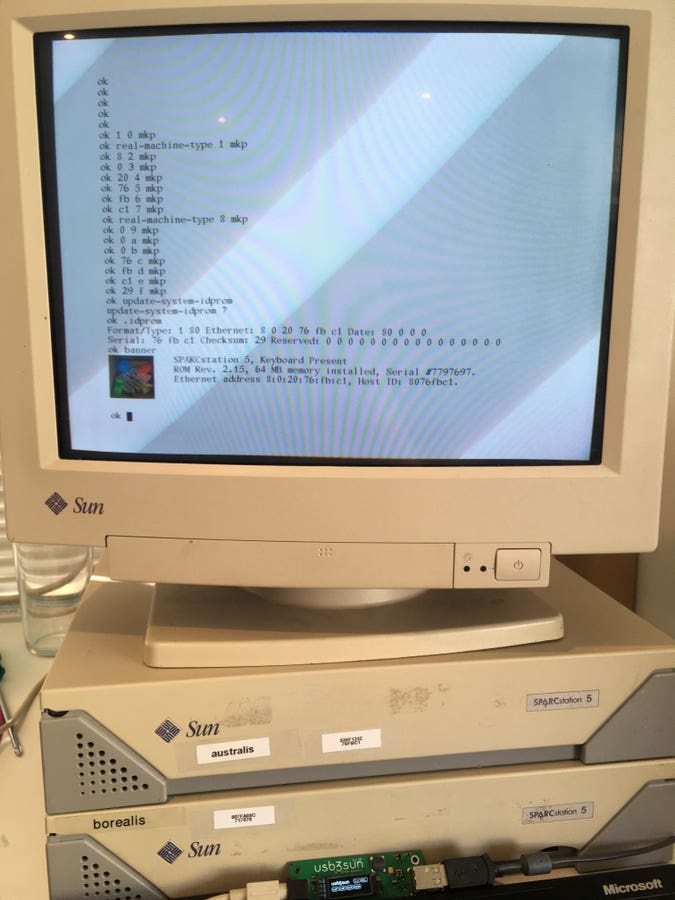
previously we explored borealis, one of our SPARCstations 5. we replaced a tantalum cap, ironed out a bunch of bugs in usb3sun, hacked together a macro to help with idprom reprogramming, installed solaris 7, connected to the internet, and grabbed our first screenshots of the machine running hotjava and netscape 4.
since then, we’ve (+bn) made some repairs to the SS5 cases, booted the two IPC lunchboxes with dead power supplies for the first time, installed NeXTSTEP on borealis, and found traces of a possible history before even its previous owner.
repair
SPARCstation 5 cases have a top cover that lifts at the back and hinges at the front, with three hooks coming out of the ABS that mate loosely with holes in the front of the metal chassis.
unfortunately, it’s very easy for these hooks to get stuck on something and snap off while opening or closing the lid, to the point where we had broken almost all of them over the course of our tinkering. in fact, we still haven’t figured out how to reliably avoid doing so, though it probably doesn’t help that i’m a pretty clumsy person. old ABS is also inherently brittle, as any collector of 90s computers (especially apple computers) can attest to.
to repair these hooks, we used super glue (ethyl cyanoacrylate) with isopropyl alcohol as a primer. retail adhesives often lack any details about their ingredients on the packaging, but you can generally find out online by looking up “<retail name> msds”.
revival
back in part 1, we found that our two IPC lunchboxes had power supplies that were destroyed by leaky caps, so we were unable to boot them. and unlike the Ultra 5, the IPC power supply is not ATX-compatible, so replacements are hard to find.
the IPC uses the same 12-pin interface as the one in the SPARCclassic datasheet (§ B.15), which unlike the 18-pin SS5 interface (§ 4.2.1) can’t be switched on and off by the mainboard. despite the different pinouts, IPC and ATX power supplies use the same style of connector (molex mini-fit jr), and the pinout appears to be a subset of ATX 20+4 (assuming POK = power good), so what if we could repin an ATX power supply without needing to recrimp any wires?

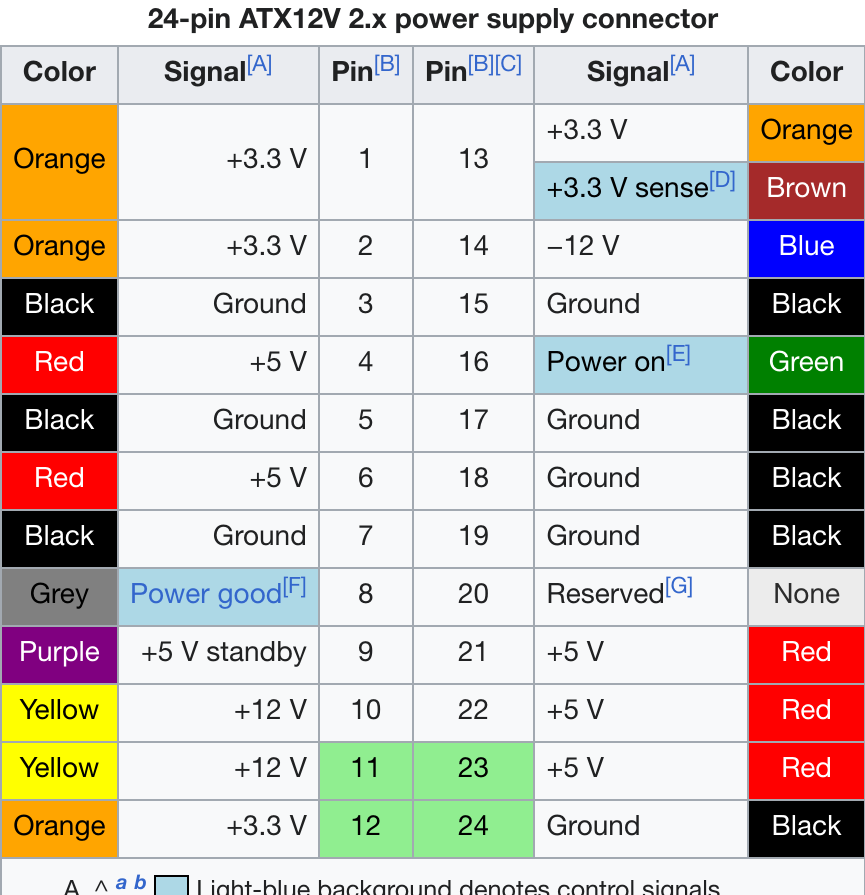
you can get an official mini-fit jr extraction tool for around 40 AUD (26 USD), but instead we found a guide to removing these pins with just two staples. getting enough of a hang of it to remove the first pin takes some patience, but it soon becomes fairly easy.
with an empty IPC housing and the corresponding wires extracted from the ATX 20+4 connector, all we had to do was push the wires into the housing, making sure to orient the open side of the terminals up towards the thumb latch. but the power supply refused to operate with its grey “power good” wire connected to the POK pin on the mainboard, with the PSU fan pulsing briefly then shutting off.
suspecting an overcurrent protection fault, we tried again with the POK pin unconnected, and both machines booted! this is not ideal, because it prevents the mainboard from knowing if the power supply is actually ready and operating at the correct voltages, but it’s a start.
we weren’t able to boot from any of the scsi hard drives in our sun machines though. the drives show up on the bus, but any attempt to boot from them would yield “not responding” errors. that said, it’s entirely possible we were using the wrong syntax.
it would be great if we could find an optical drive for these machines, because without one we’re limited to booting off the hard drive or floppy disks.
nextstep
sun4m machines like the sparcstation 5 can run solaris, netbsd, openbsd (up to 5.9), and linux (in theory), but did you know they can run NeXTSTEP?
yes, the operating system by the same NeXT whose workstations were used to develop doom and the first web browser.
you see, between 1991 and 1993, NeXT pulled out of the workstation market and went software-only. they ported NeXTSTEP to other platforms, starting with the pc in version 3.1 and then pa-risc (hppa) and sparc in 3.3, the final version.
since our ss5 pizzaboxes happened to each have a compatible cpu, we were able to try it on one of those. we picked the slower 70 MHz borealis, since we wanted to save the 85 MHz (now australis) for a long-term solaris 2.5.1 install.
booting the disc we burned, we got random read errors and a weird “Watchdog Reset” error each time. cleaning the disc got rid of the read errors, but not the watchdog reset, so we burned another. watchdog reset.
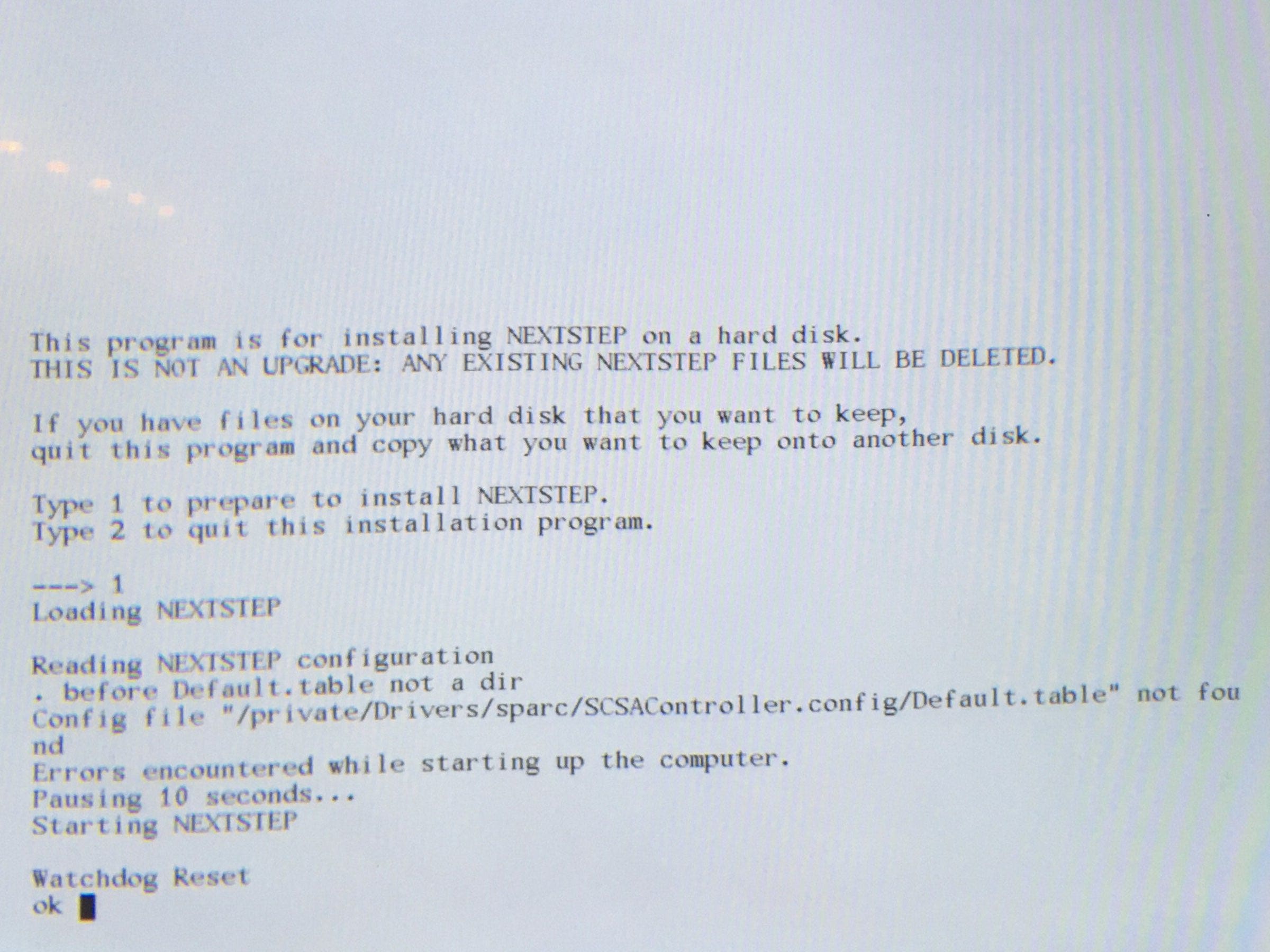
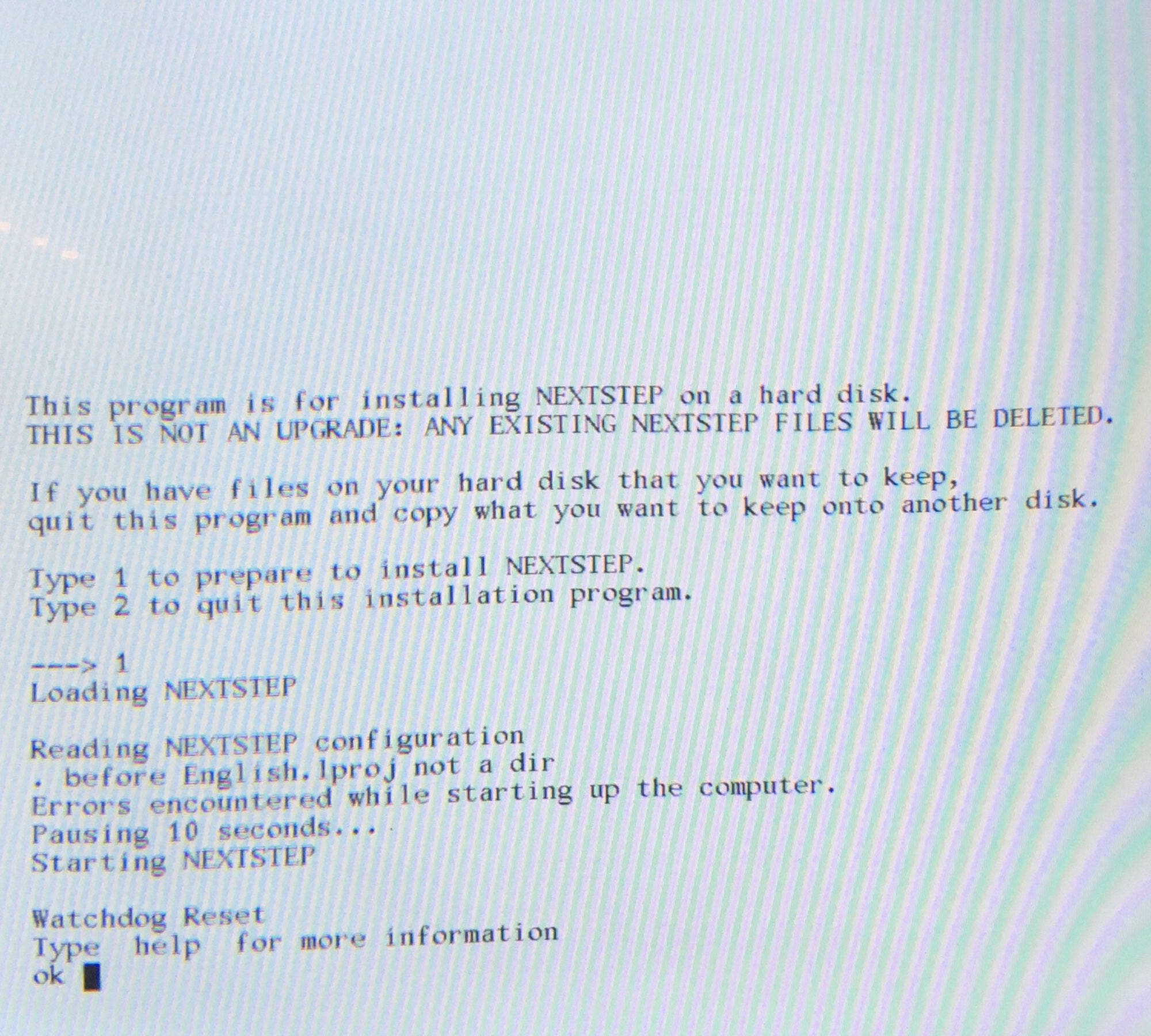
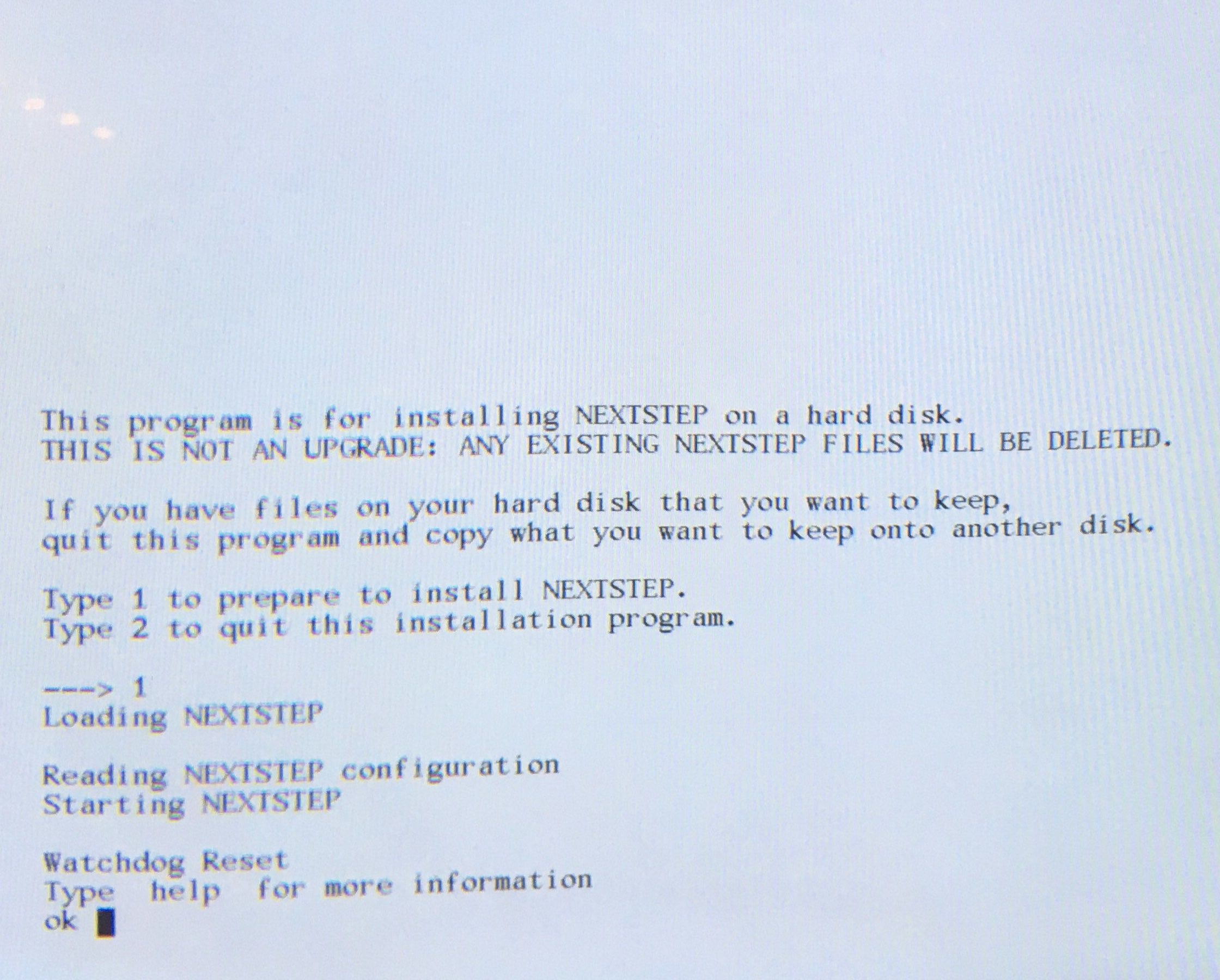
eventually i remembered that a corrupt idprom breaks networking in solaris, because it makes the machine’s default mac address invalid, so by analogy, programming the idprom might help here. on our first attempt, it didn’t help, but when we tried again and booted the installer in verbose single-user (-v -s), we got to a shell!
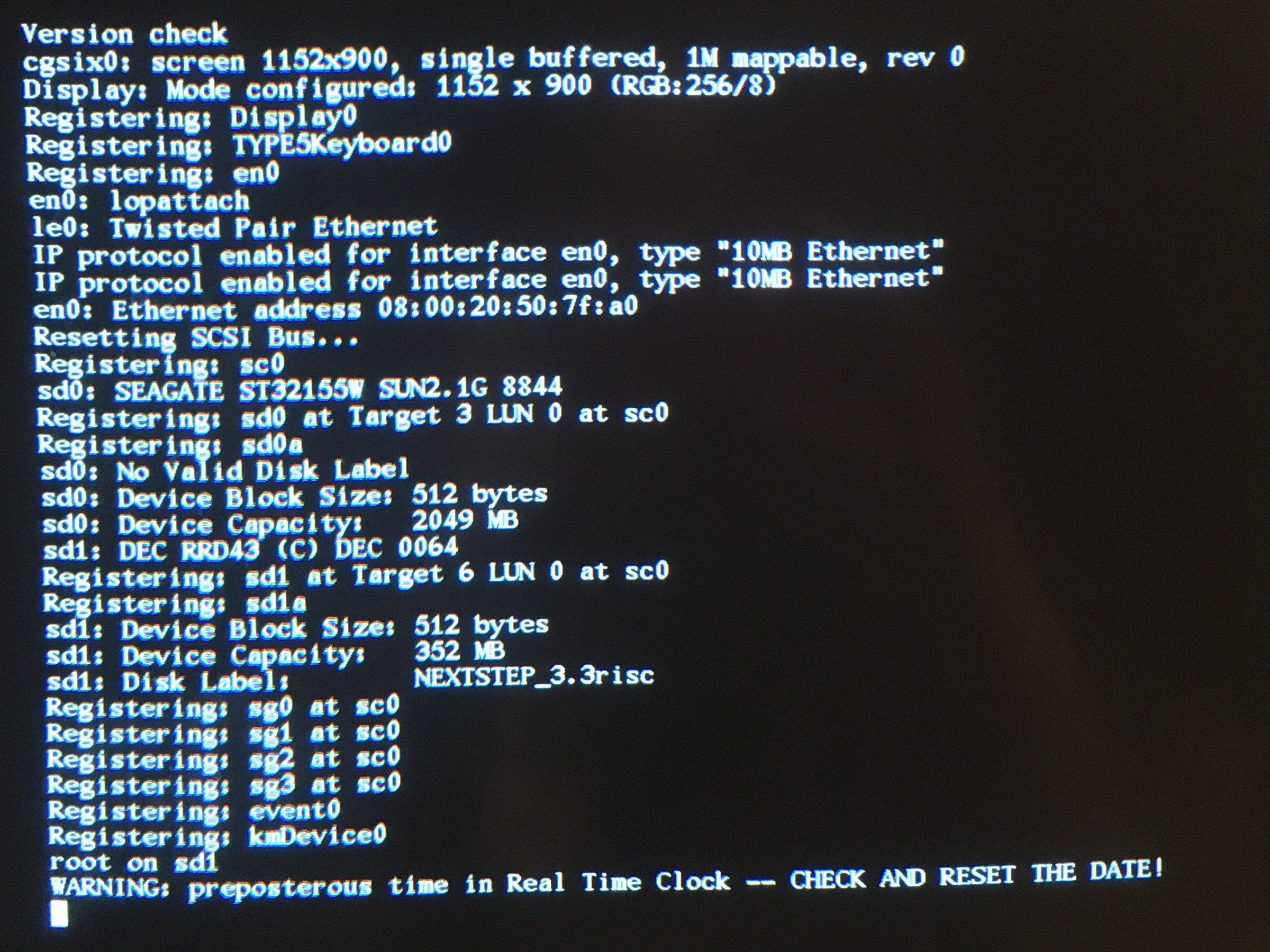
on the fediverse, we learned that nextstep is known to refuse to boot on sparcstations when the idprom values are invalid. thanks Michael Engel!
with the installer now booting correctly, we finished what we later found out was just the text-mode phase, copying a bunch of files over the course of twenty minutes or so.
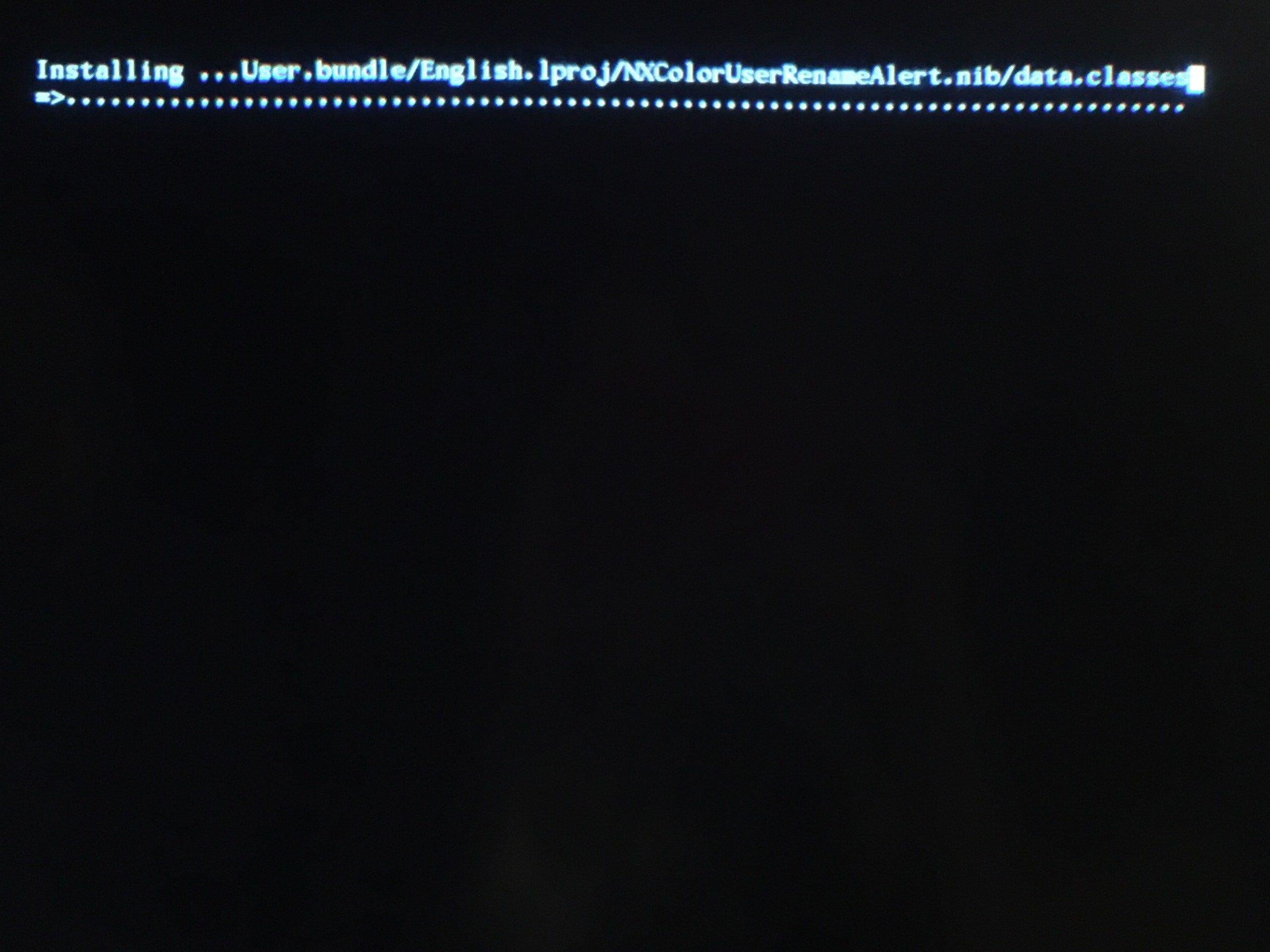
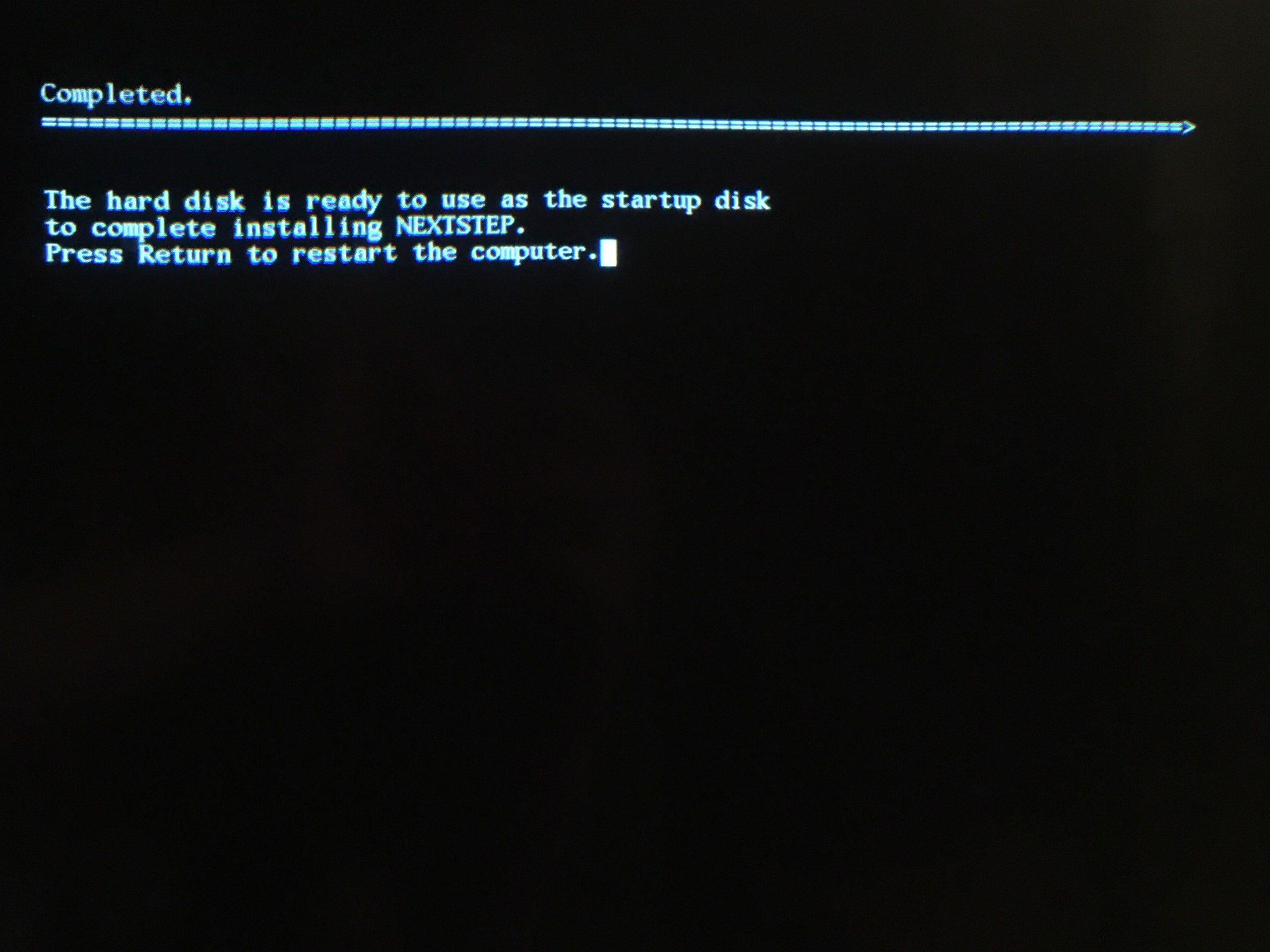
you see, there was also a graphical phase, which added well over an hour to that.
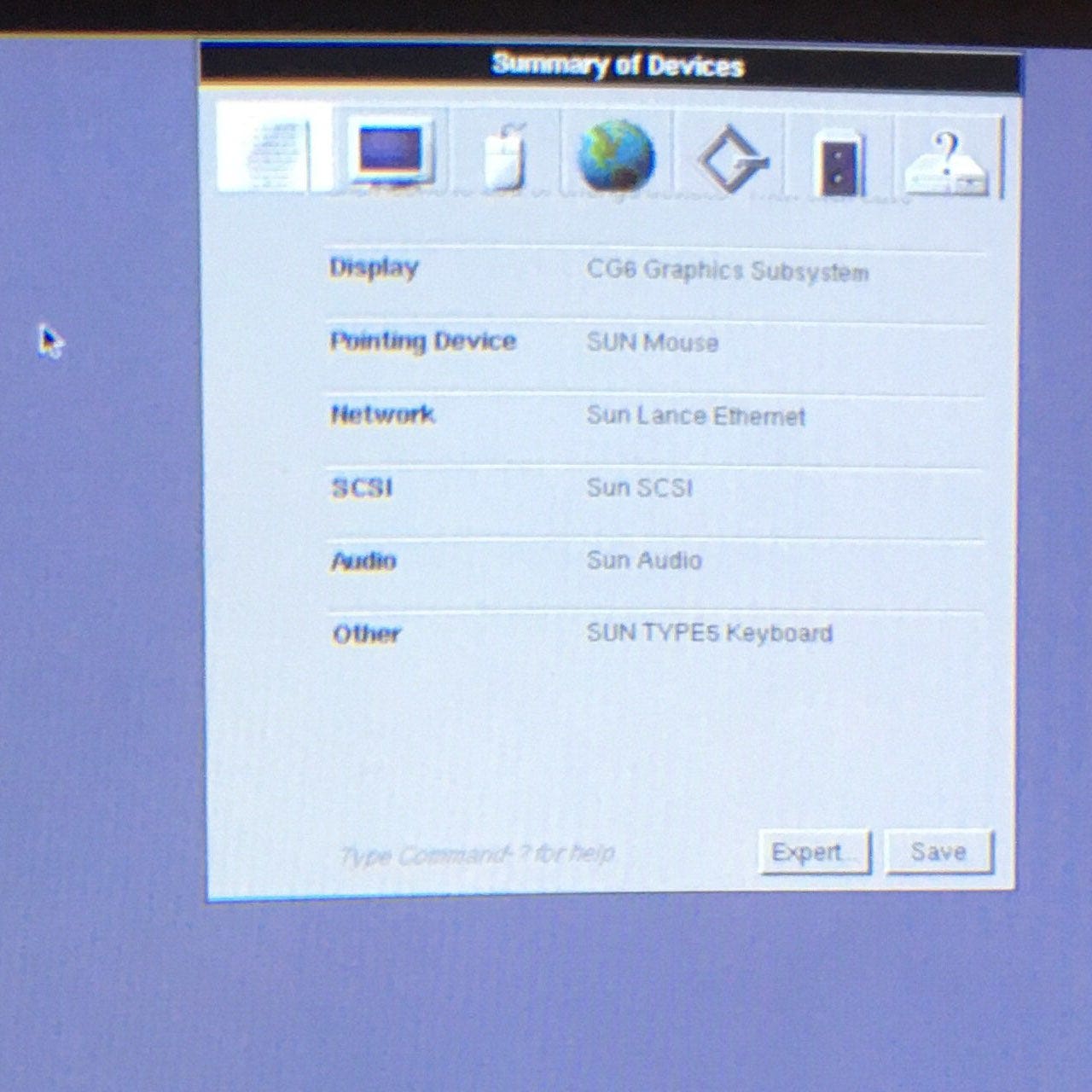
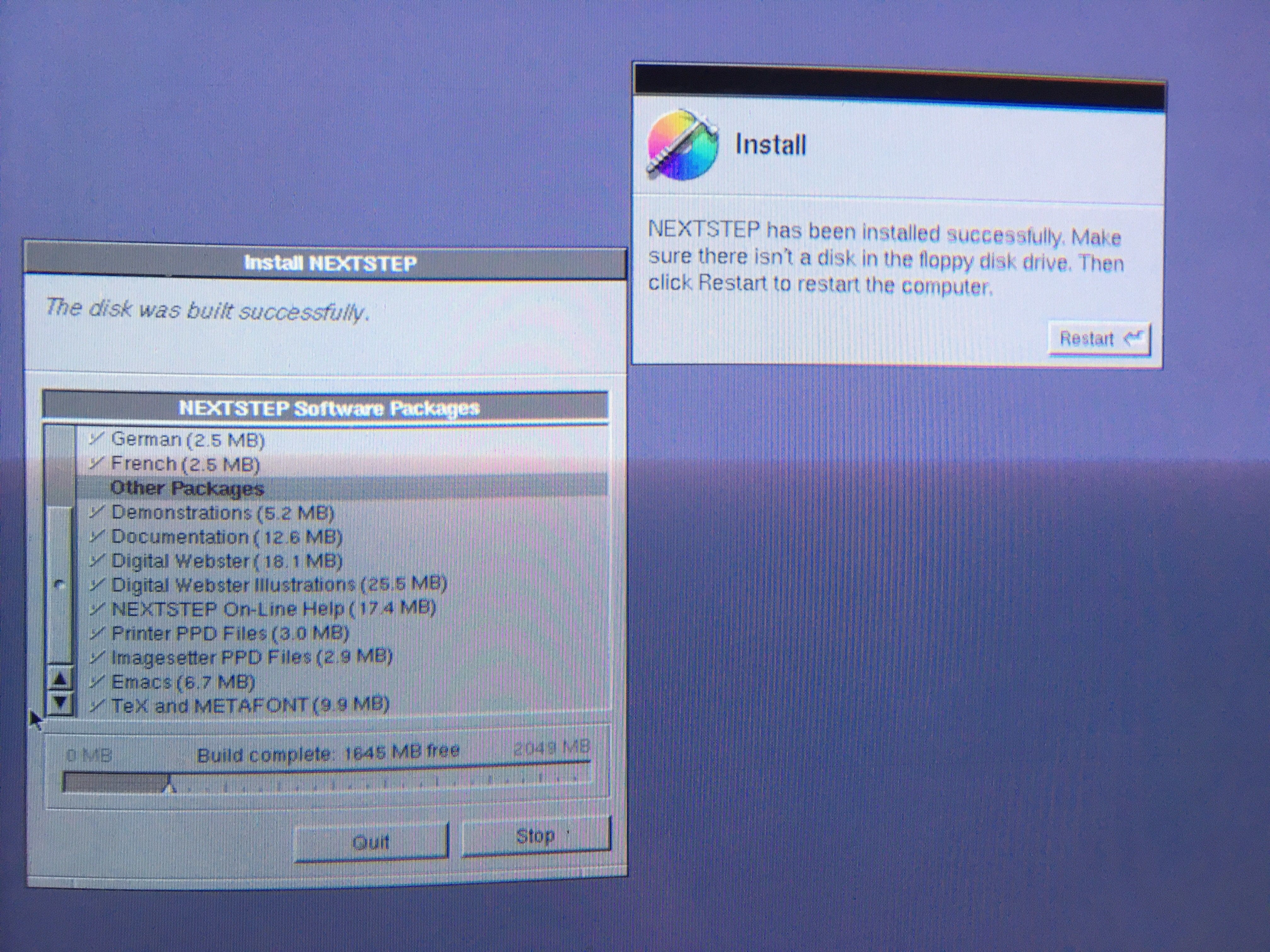
nextstep is a lot like macOS 10, because after apple acquired NeXT, they rebuilt said successor to mac os 9 on top of it. this reminds me of how microsoft forked “nt os/2” and rebuilt the future of windows on top of that, after pulling out of their collaboration on os/2 with ibm.
as a result, many of the distinctive features of macOS 10 like
- the “beachball” busy cursor,
- “.app” directories,
- the time zone picker, where you can click on a map that highlights all of the places with your time zone offset,

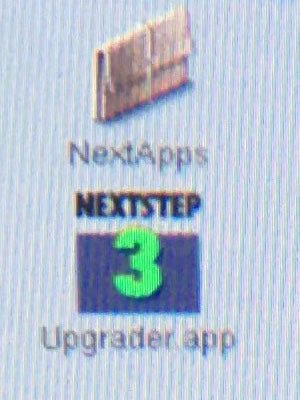
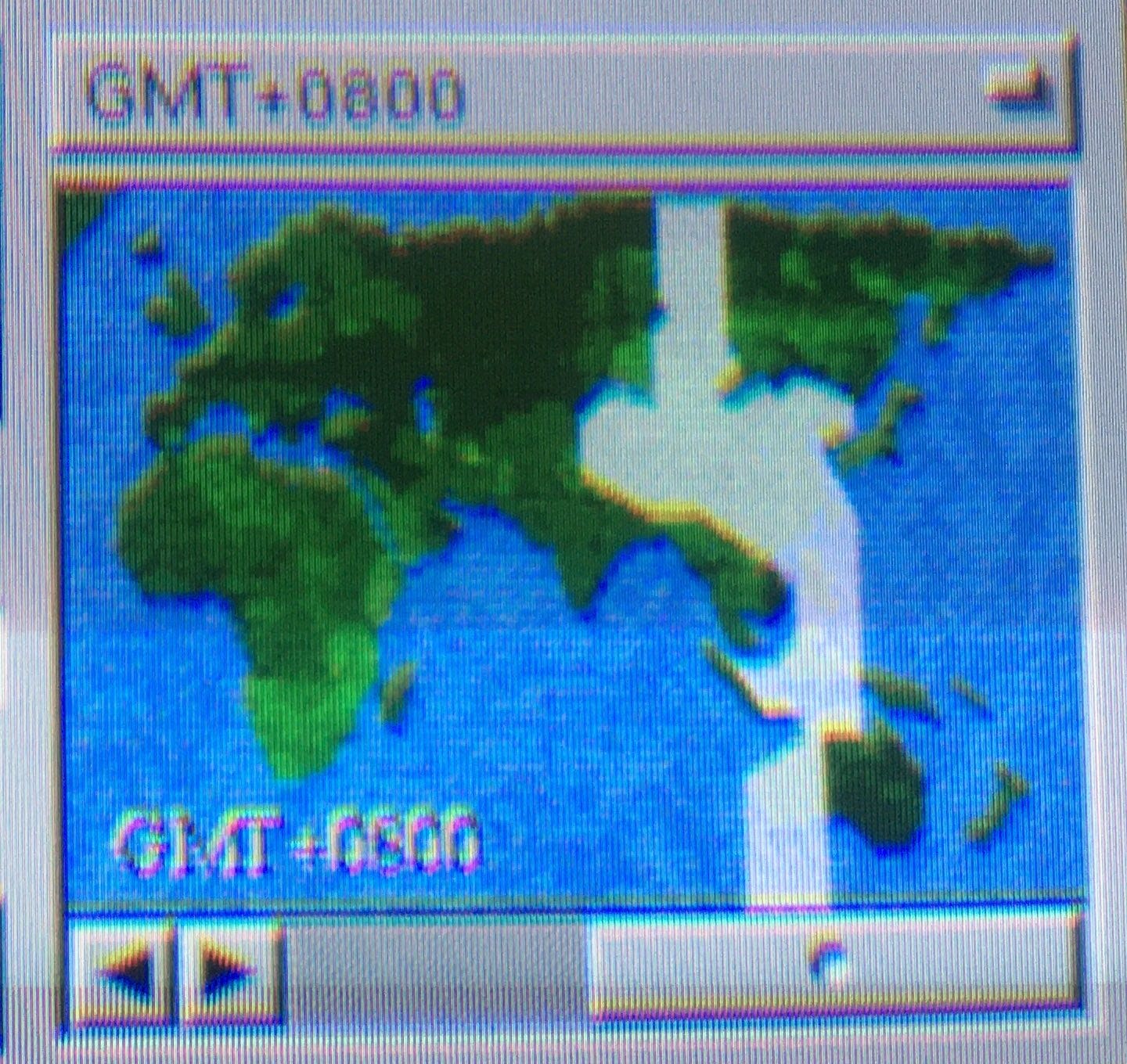
- the exact words “Welcome Bienvenue Willkommen Bienvenido Benvenuto Välkommen”, and
- the “funk” alert sound effect,


actually came from nextstep. but the influence went both ways:
- several other alert sound effects,
- fat binaries, and
- ejecting cd drives by dragging them into the trash
existed in both nextstep and older versions of mac os!
apples to apples, dust to dust
one way to make sense of this is to look at the birth and death of NeXT. it was founded by one of the old co-founders of apple, who had (at the time) recently been forced out, and many of the workers that built it were also ex-apple. so NeXT was essentially a fork of apple, and in 1996, it returned from whence it came.
this is not the only time a radical fork has been reintegrated upstream. gcc, the c compiler sharing a name with the free compiler suite it was the heart of, got forked as “egcs” in 1997, but they were ultimately reunited with the release of gcc 2.95.
xhtml was once meant to be a radical xml-based successor to html by the original creators of html. it got even more radical in xhtml 2, which never really went anywhere because it was incompatible with existing web content, unlike earlier versions which could at least be written in an awkward html polyglot that kinda worked in internet explorer 6. the more descriptivist side of w3c, which were primarily the browser vendors, broke off to continue working on the old html, and three things happened:
- xhtml was absorbed into html, becoming simply an optional alternative serialisation of html that interoperates better with xml tooling
- the ability to mix it with svg and mathml, once exclusive to xhtml, became possible in html after some improvements to the html parser
- the relationship between the two parties reversed on html, with html becoming a whatwg spec that periodically gets released with a version number by w3c
australis
solaris (2.)7 runs incredibly slowly on borealis, and even if we double its memory to 128 MiB on loan from our other sparcstation 5, things aren’t much better. when the machine was announced, sun was still on solaris 2.4, and solaris 2.5 was released soon after, so solaris 7 probably only had a chance at running well on the higher-end sparcstations 10 and 20.
our other sparcstation 5 has a faster cpu, so why don’t we swap in the nice 2 GB hard drive and install solaris 2.5.1 there?
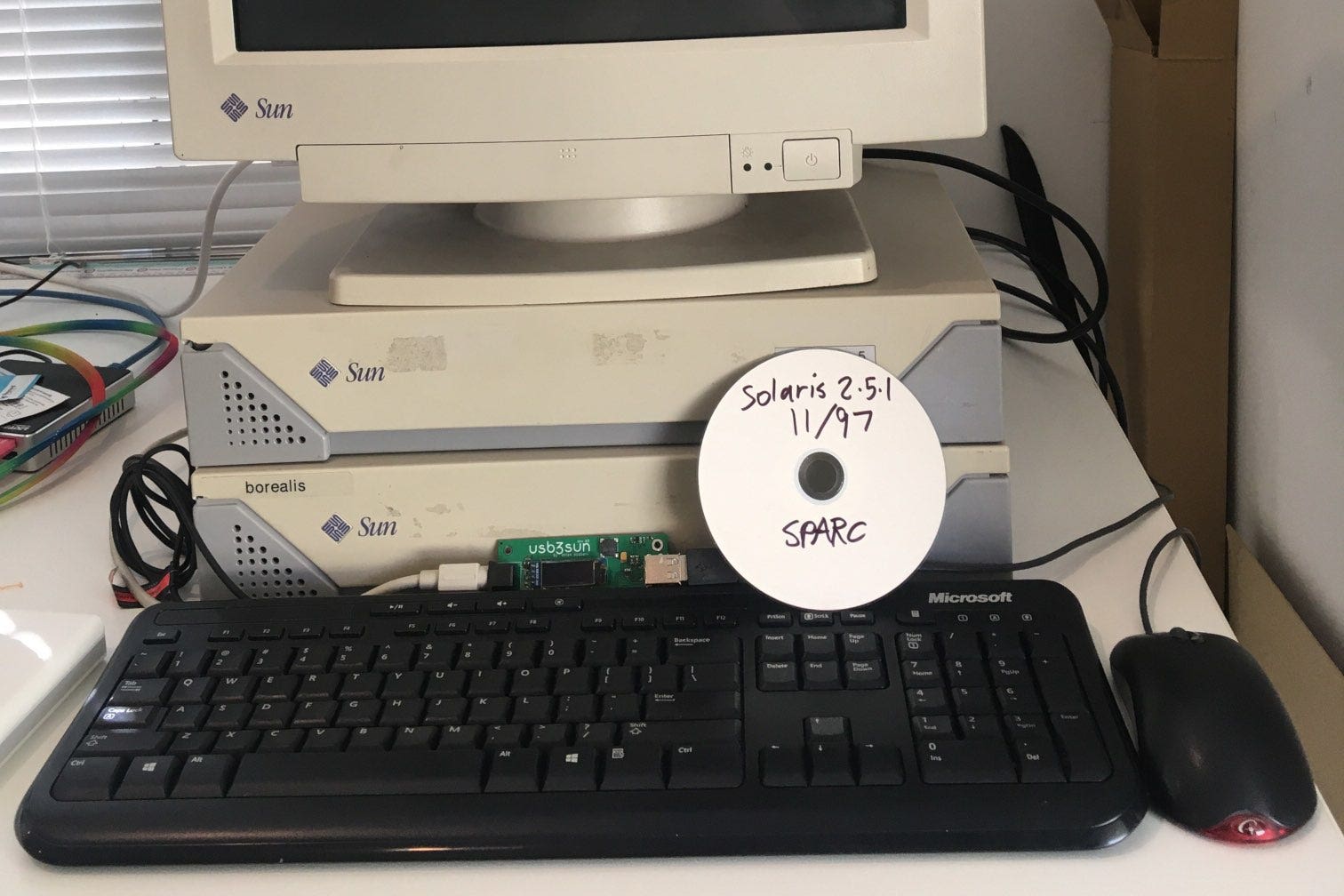
i burned two copies of the install cd, and both of them threw a wide variety of read errors that ultimately led to boot failure. i told @ariashark about this, and it suggested i try the other machine. the sharks being wise as ever, the installer booted without any problems, so i figured the drive was faulty.
while swapping the cd drives, i noticed that one of them was mounted with wedges of paper instead of the proper rollers. two of the three wedges appear to come from branded stationery for the defence science & technology organisation, which is like the australian military’s research sidekick.
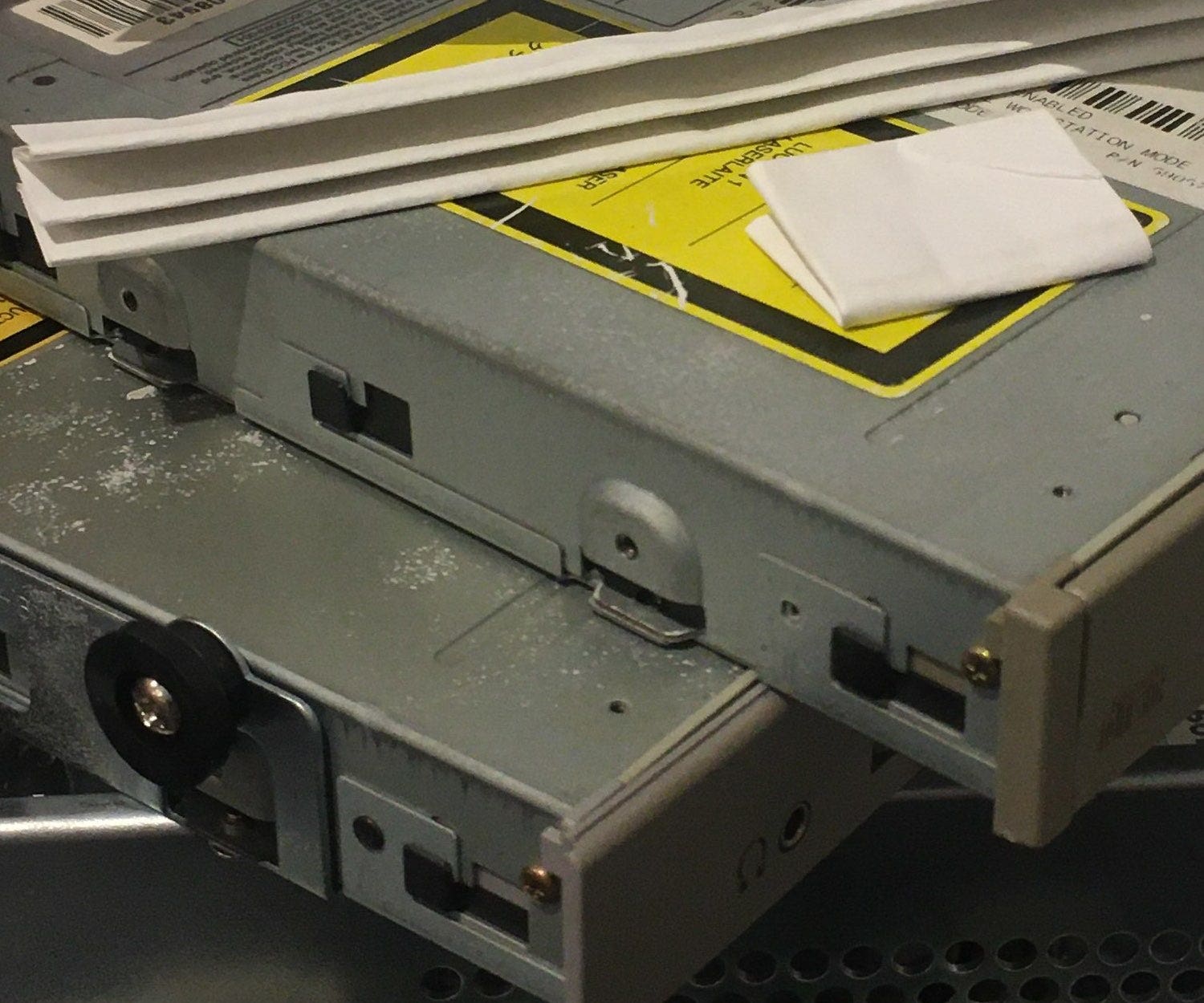
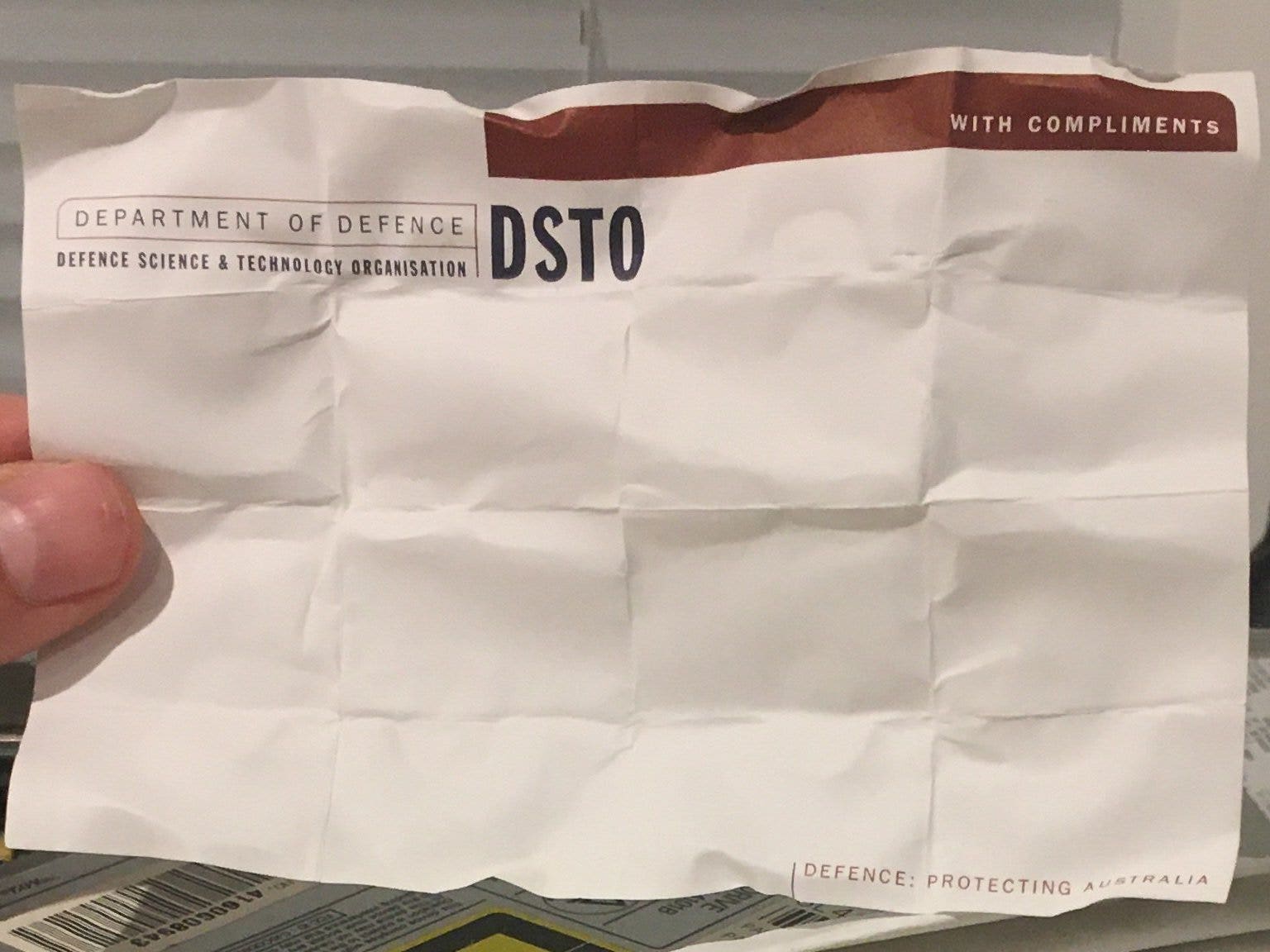
hopefully we can give australis a better life!